Charles E W Bean, Diaries, AWM38 3DRL 606/244/1 - 1916 - 1933 - Part 12
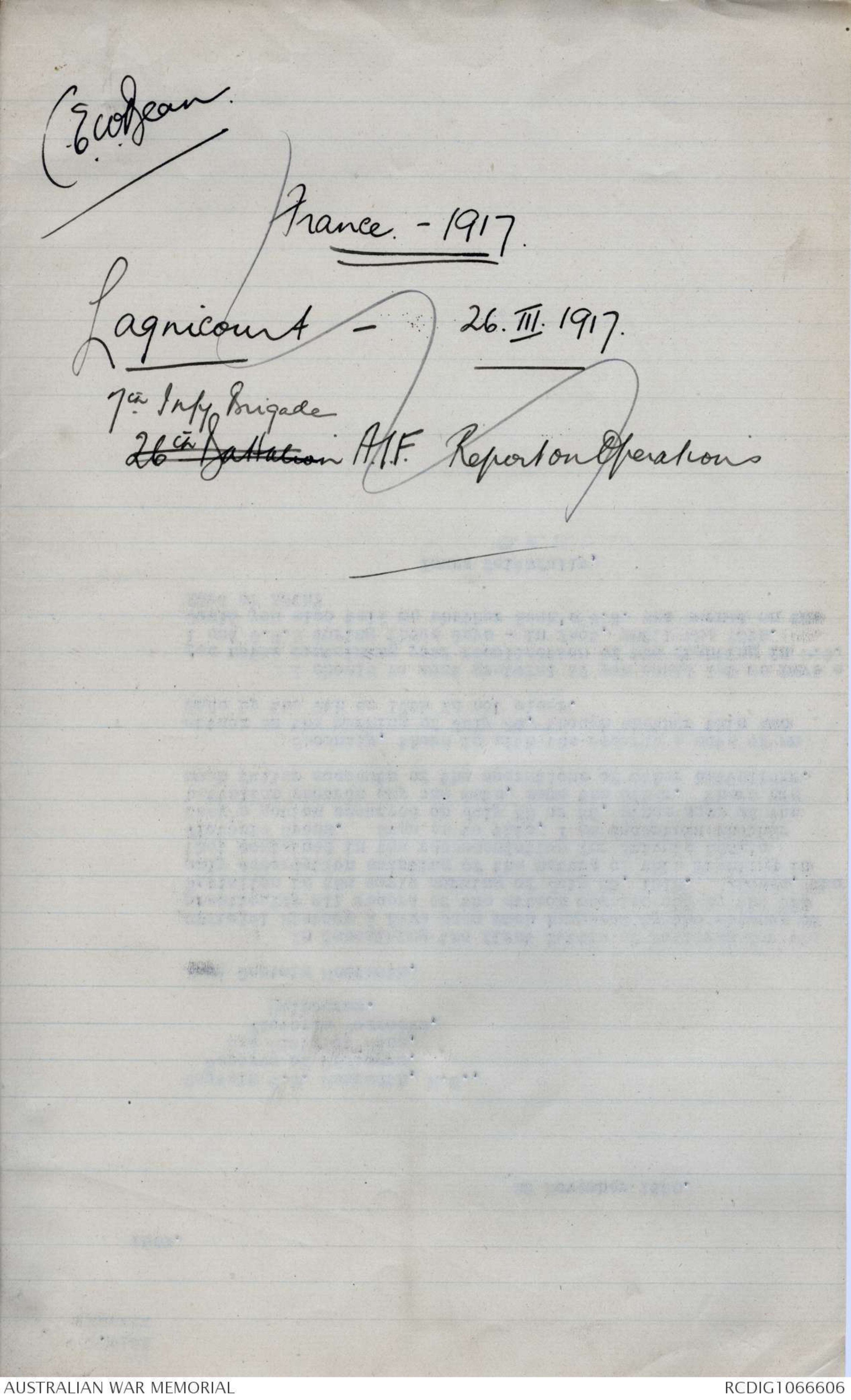


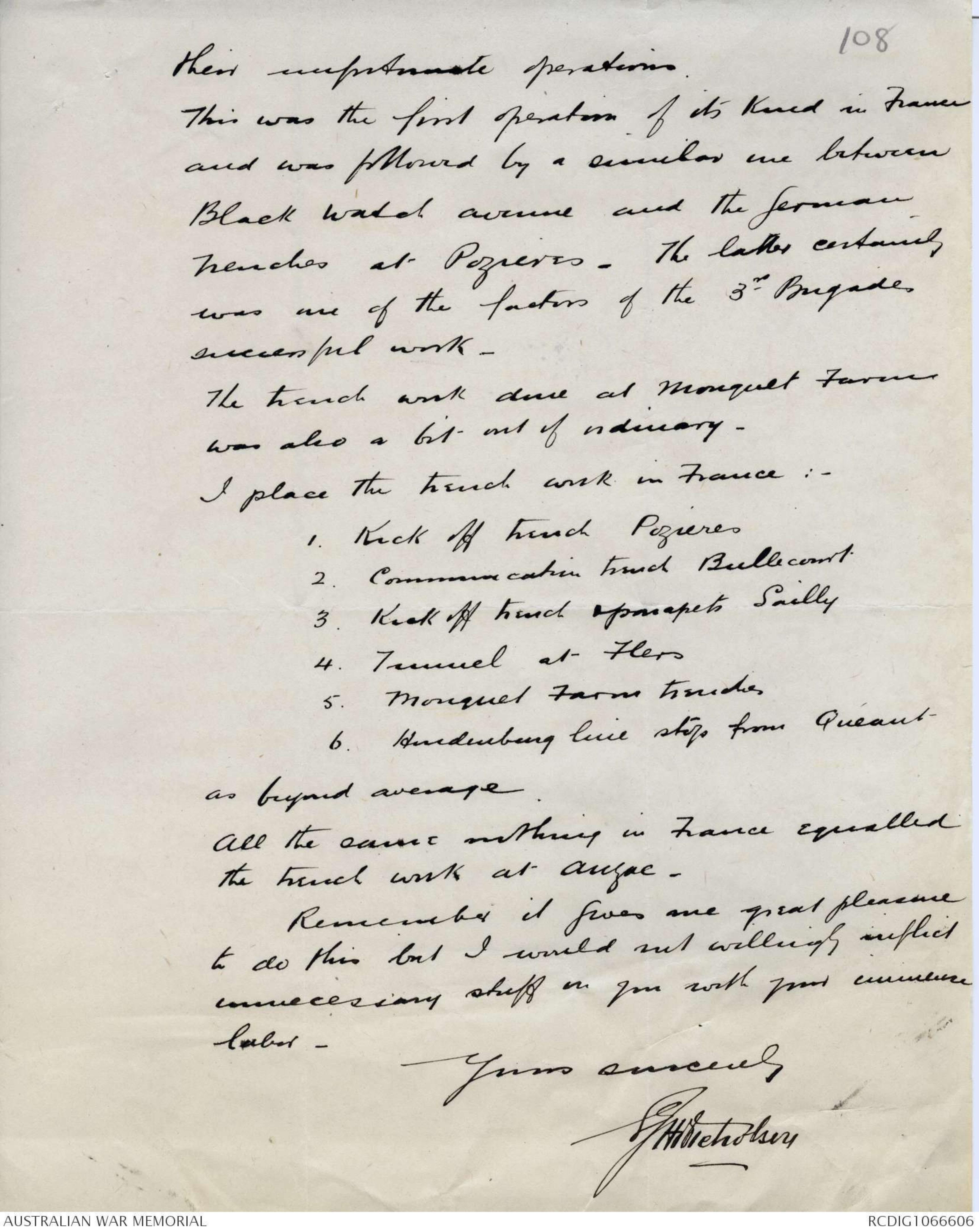
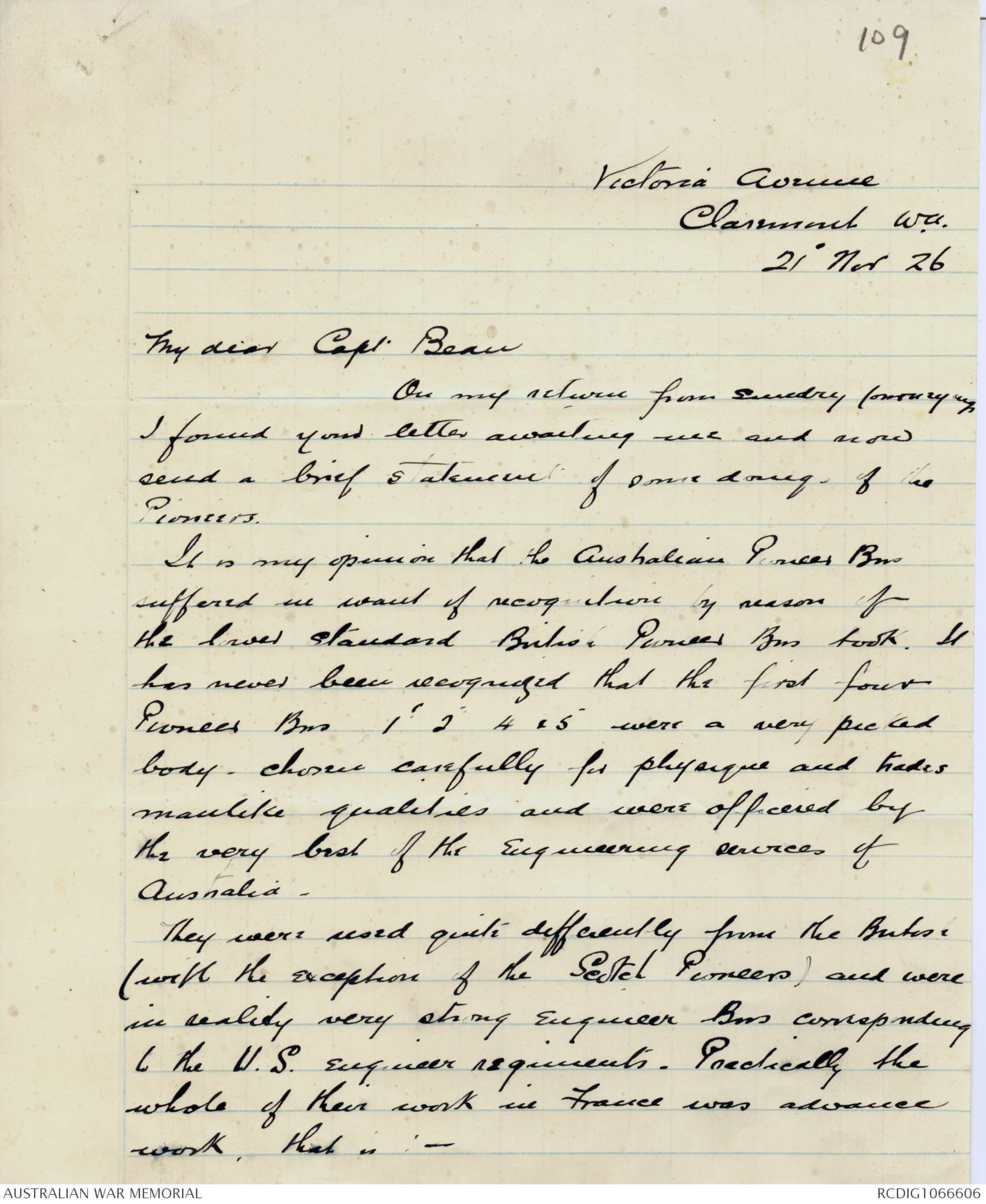
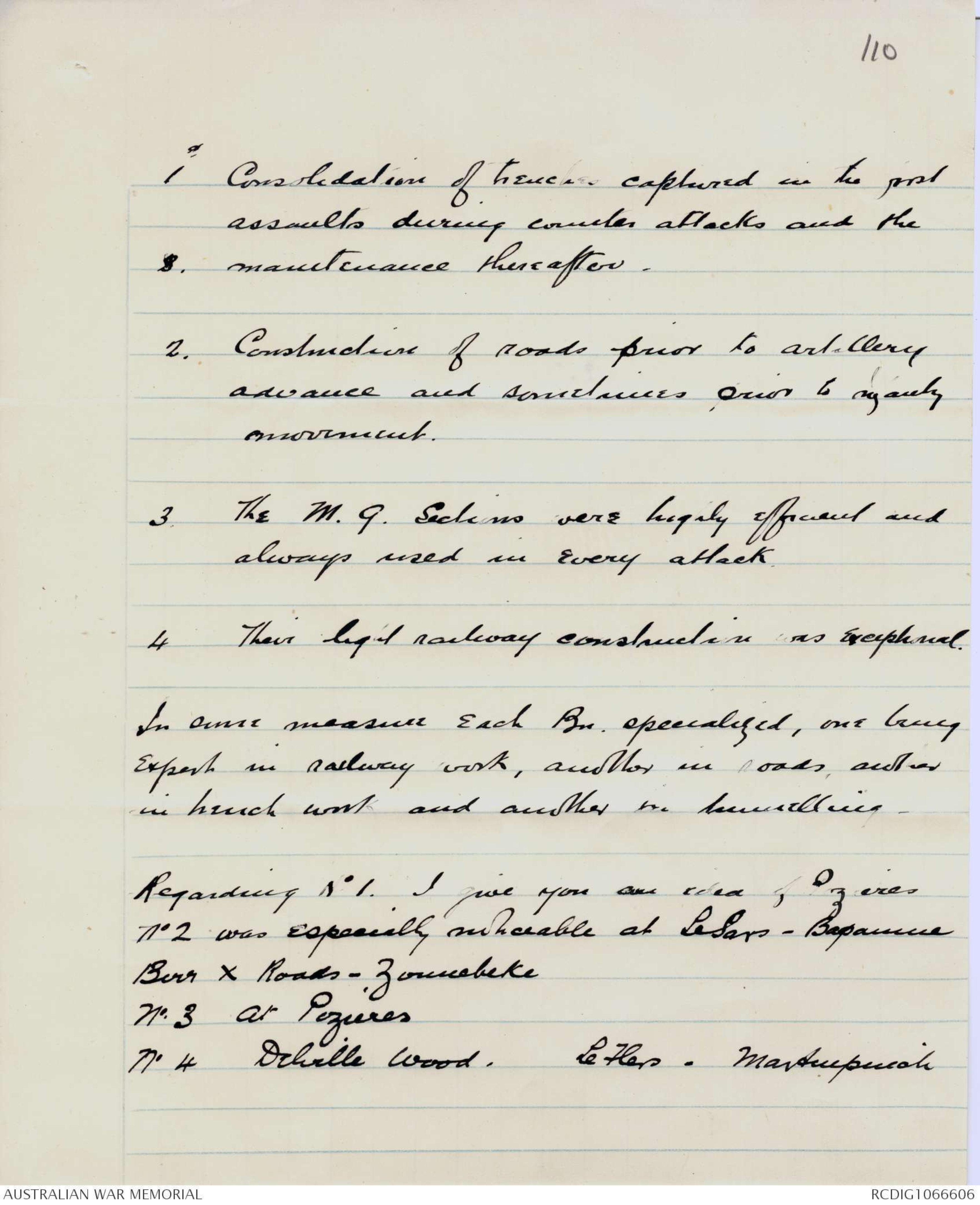

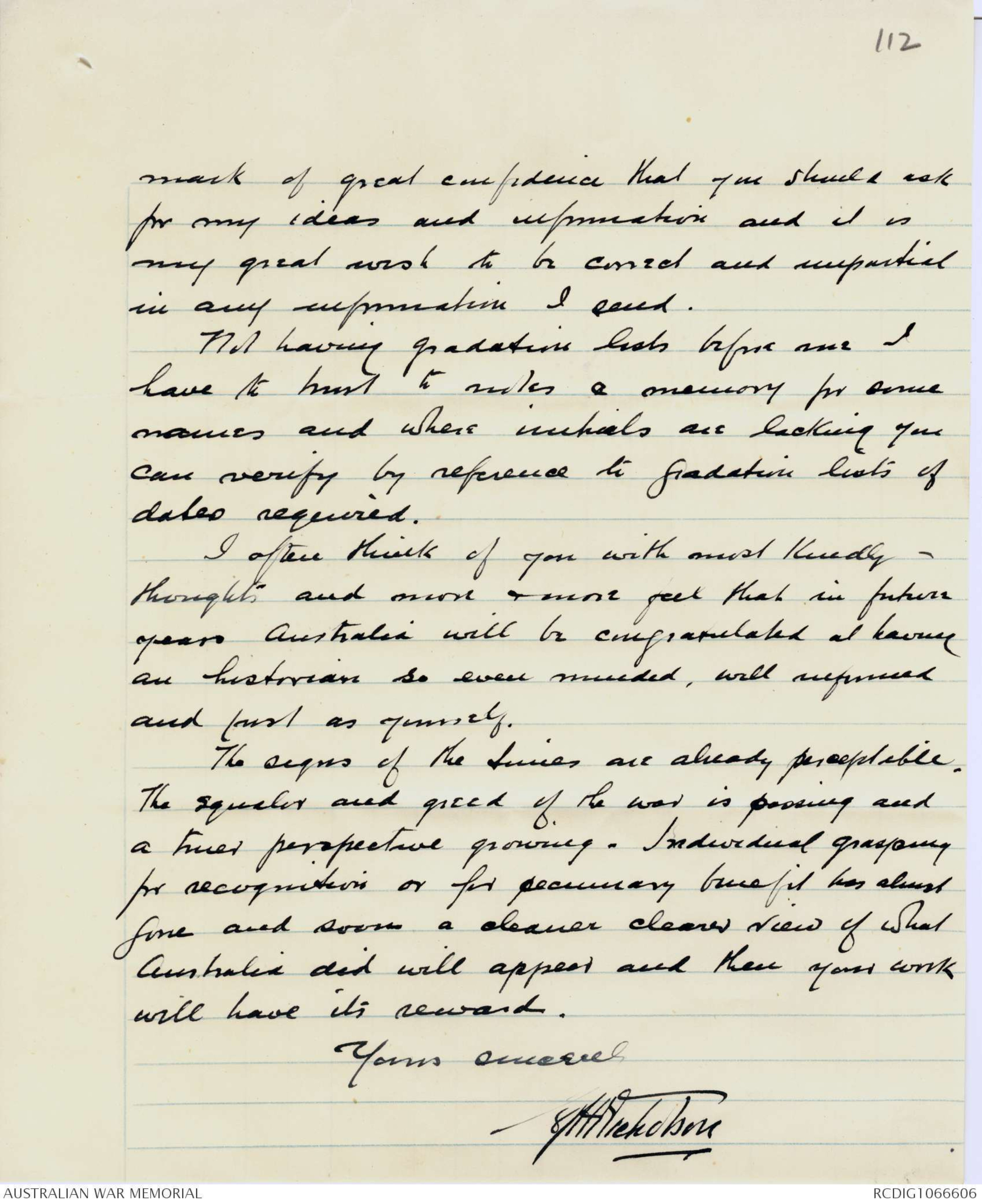
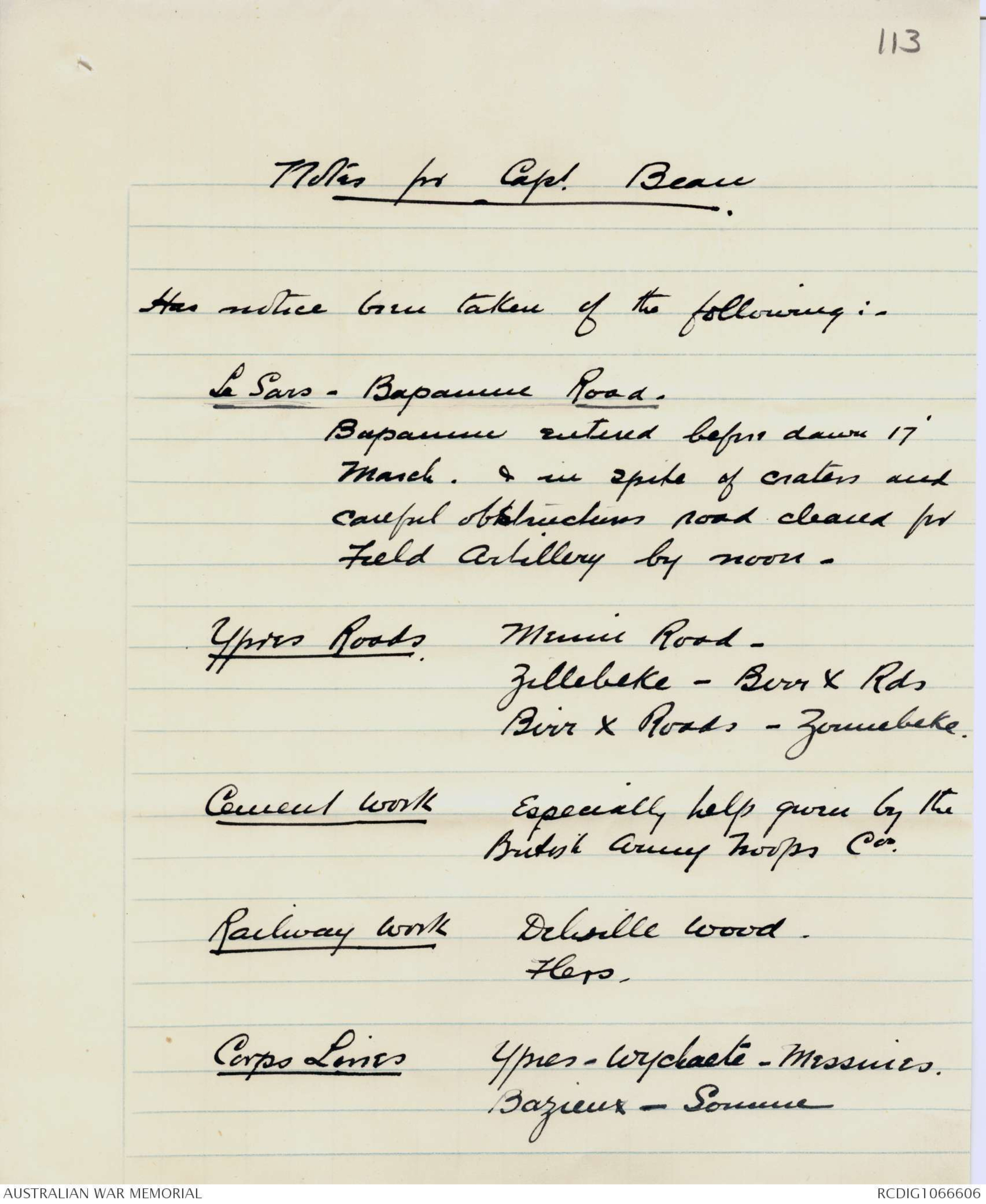
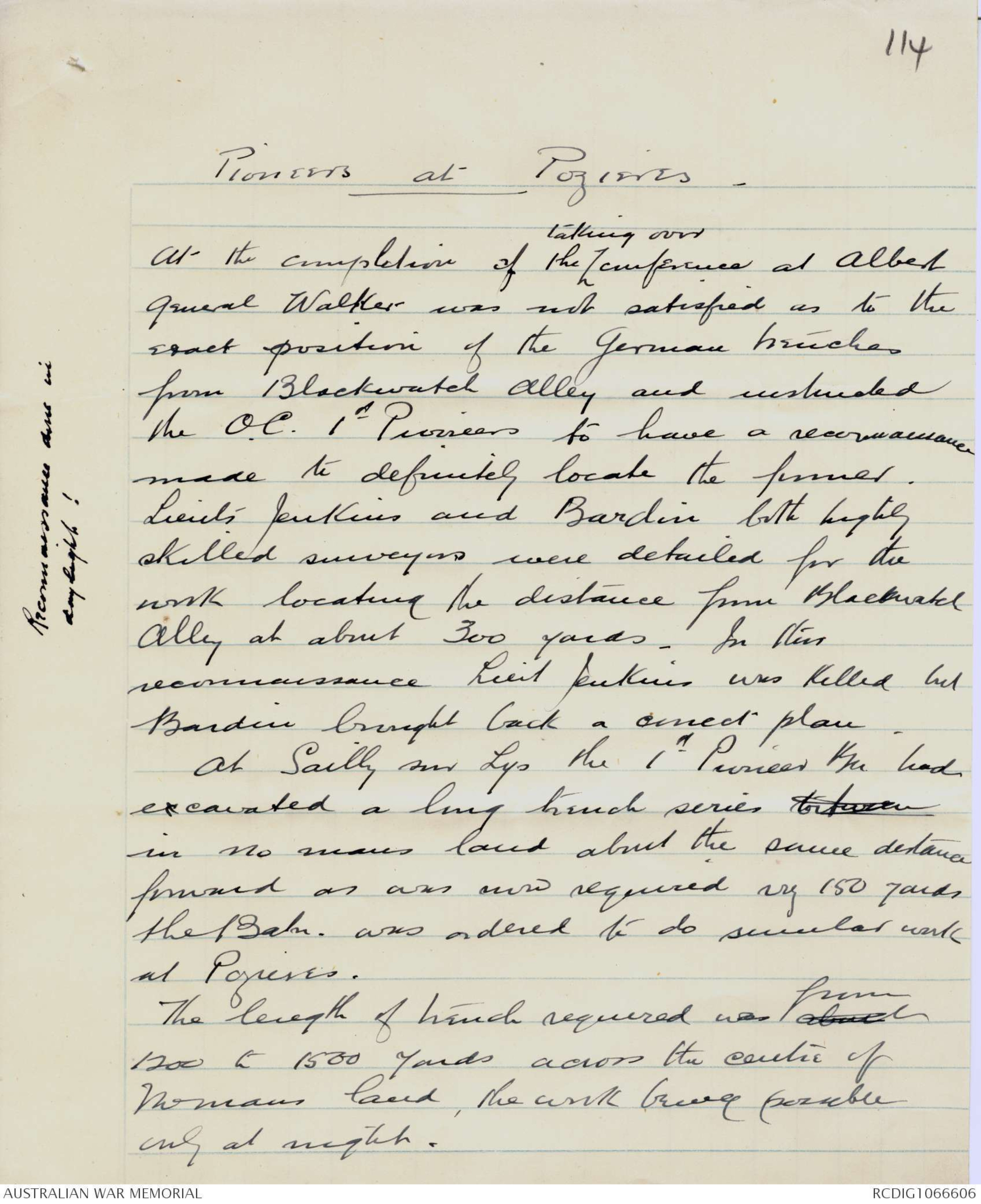
C.E.W.Bean.
France. - 1917.
Lagnicourt - 26.lll.1917.
7th Infy Brigade
26th Battalion A.I.F. Report on Operations
106
F. 4151
xxxxxx
1570.
25 November 1926.
Captain J.P. Ramkema, M.C.,
Reserve of Officers,
1st District Base,
Brisbane.
Dear Captain Ramkema,
In describing the first battle of Pozieres for the
Official History I have been much hampered by the absence of
practically all record of the attack carried out by the 9th
Battalion in the early morning of July 23, 1916. Indeed, the
only description existing of the nature of this fighting is
that contained in the recommendation for Private Leak'sss
Victoria Cross. Even as to this, I am uncertain whether
Leak's action occurred on July 23 or 25, since some of the
battalion records say one date, some the other. There are
much fuller accounts of the operation of other battalions.
Secondly, there is with the records a note of an
attack on the morning of July 24, though whether this was
made by the 9th or 10th is not clear.
I should be most grateful if you could let me have a
few notes containing your recollection of the fighting in
O.G.1 and O.G.2 during those days - in fact, until the 25th.
Could you also tell me whether Leak's V.C. was earned on the
23rd or 25th?
Yours faithfully,
C.E.W. BEAN
107
[*H.N.
Aust Pioneers in France*]
7 Victoria Avenue
Claremont
WA.
6’ July 1922
My dear Bean
Yours of 14’ June duly came
along.
I am sending some roughly written notes
on Bapaume & Menin Roads. If these are
of any use would it be possible to return
these with a plan of the Ypres country
and also one of Bapaume area where I
can with the help of my diaries work the
notes up absolutely correctly as though it all
seems clear in my mind still the maps
would be a safe guide -
I am off ^tonight for a longish journey overland to
Kimberley returning on the 16’ August so
if that is too late for you make the best
of the notes given -
Please dont let me be a bore offering
too much stuff but I suggest the first Australian
work done at Sailly might be interesting
especially the group of trenches constructed
in no mans land which afterwards saved
a great number of the 5' Div people in
108
their unfortunate operations.
This was the first operation of its kind in France
and was followed by a similar one between
Black Watch avenue and the German
trenches at Pozieres - The latter certainly
was one of the factors of the 3rd Brigades
successful work -
The trench work done at Mouquet Farm
was also a bit out of ordinary -
I place the trench work in France:-
- Kick off trench Pozieres
- Communication trench Bullecourt
3. Kick off trench & parapets Sailly
4. Tunnel at Flers
5. Mouquet Farm trenches
6. Hindenburg line stops from Queant -
as beyond average.
All the same nothing in France equalled
the trench work at Anzac -
Remember it gives one great pleasure
to do this but I would not willingly inflict
unnecessary stuff on you with your immense
labor.
Yours sincerely
SJNicholson
109
Victoria Avenue
Claremont W.A.
21' Nov 26
My dear Capt Bean
On my return from sundry journeying,
I found your letter awaiting me and now
send a brief statement of some doings of the
Pioneers.
It is my opinion that the Australian Pioneer Bns
suffered in want of recognition by reasons of
the lower standard British Pioneer Bns took. It
has never been recognized that the first four
Pioneer Bns 1’ 2’ 4 & 5’ were a very picked
body - chosen carefully for physique and trades
manlike qualities and were officered by
the very best of the Engineering services of
Australia.
They were used quite differently from the British
(with the exception of the Scotch Pioneers) and were
in reality very strong Engineer Bns corresponding
to the U.S. engineer regiments. Practically the
whole of their work in France was advance
work, that is : -
110
1st. Consolidation of trenches captured in the post
assaults during counter attacks and the
x. maintenance thereafter.
2. Construction of roads prior to artillery
advance and sometimes prior to [[reguly?]]
movement.
3. The M.G. Sections were highly efficient and
always used in every attack.
4. Their light railway construction was exceptional.
In some measure each Bn. specialized, one being
expert in railway work, another in roads, another
in trench work and another in tunnelling.
Regarding No1. I give you an idea, Pozieres
No2 was especially noticeable at LeSars - Bapaume
Birr X Roads - Zonnebeke
No3 at Pozieres
No4 Delville Wood. Le Flers - Martinpuich
111
General Walker once writing me from Italy -
gave as his considered opinion that they were the
most efficient units of their class in any
army and it is^in my own experience that they
maintained an extraordinary efficient standard
throughout.
The fact that they were so capable made them
impatient of control through the Engineers services.
Their ideal was “Let the Engineers tell us what
they require and let us do the job in our own way”
You must remember Brigade Commanders had
no control over these units, they were handled from
Div H.Q. -
It will be interesting to you to know that
quite recently Associations of Engineering Services
are being formed comprising all classes of
technical units and the gatherings are very
gratifying. All competitive jealousy has been
sunk and a general agreement come to that
Engineers, Pioneers, Tunnellers, Signallers, Railway
units were all on a par and I think this
is sufficient confirmation of any claim that
the Pioneers were exceptional.
I need hardly say that I take it as a
112
mark of great confidence that you should ask
for my ideas and information and it is
my great wish to be correct and impartial
in any information I send.
Not having gradations lists before me I
have to trust to notes & memory for some
names and where initials are lacking you
can verify by reference to gradation lists of
dates required.
I often think of you with most kindly -
thoughts and more & more feel that in future
years Australia will be congratulated at having
an historian so even minded, well informed
and just as yourself.
The signs of the times are already perceptible.
The squalor and greed of the war is passing and
a truer perspective growing - Individual grasping
for recognition or for pecuniary benefit has almost
gone and soon a cleaner clearer view of what
Australia did will appear and then your
work will have its reward.
Yours sincerely
SJ Nicholson
113
Notes for Capt. Bean
Has notice been taken of the following:-
Le Sars - Bapaume Road.
Bapaume entered before dawn 17’
March. & in spite of craters and
careful obstructions road cleared for
Field Artillery by noon -
Ypres Roads Menin Road -
Zellebeke - Birr X Rds
Birr X Roads, - Zonnebeke.
Cement Work Especially help given by the
British Army Troops Cos.
Railway Work Delville Wood.
Flers.
Corps Lines Ypres - Wychaete - Messines.
Bazieux - Somme
114
Pioneers at Pozieres.
At the completion of the ∧taking over conference at Albert
General Walker was not satisfied as to the
exact position of the German trenches
from Blackwatch Alley and instructed
the O.C. 1st Pioneers to have a reconnaissance
made to definitely locate the former.
[*Reconnaissance done
in daylight!*]
Lieuts Jenkins and Bardin both highly
skilled surveyors were detailed for the
work locating the distance from Blackwatch
Alley at about 300 yards. In this
reconnaissance Lieut Jenkins was killed but
Bardin brought back a correct plan.
At Sailly sur Lys the 1st Pioneer Bn had
excavated a long trench series between
in no mans land about the same distance
forward as was now required viz 150 yards
the Batn. was ordered to do similar work
at Pozieres.
The length of trench required was about from
1200 to 1500 yards across the centre of
Nomans land, the work being possible
only at night.
 Deb Parkinson
Deb ParkinsonThis transcription item is now locked to you for editing. To release the lock either Save your changes or Cancel.
This lock will be automatically released after 60 minutes of inactivity.